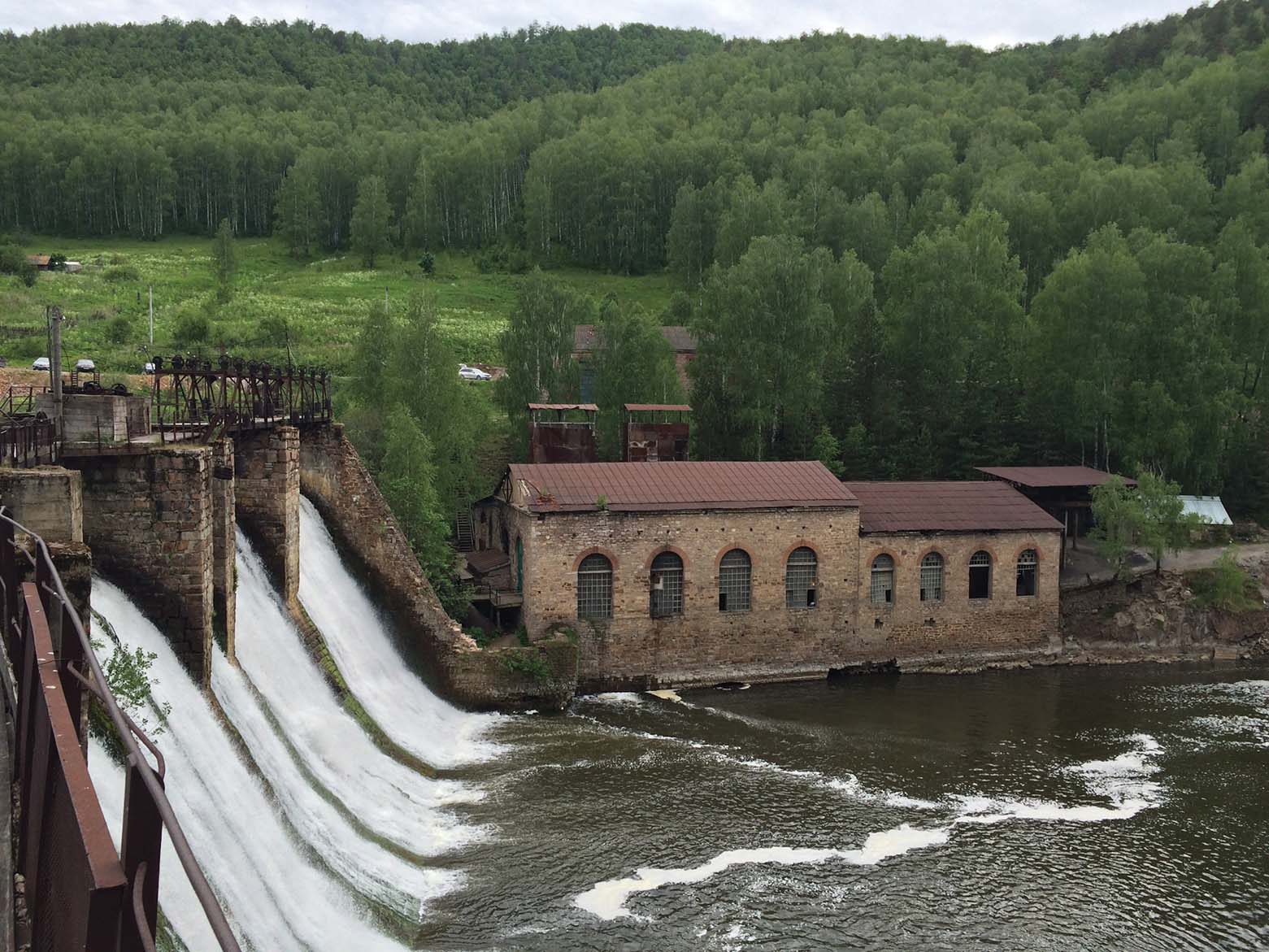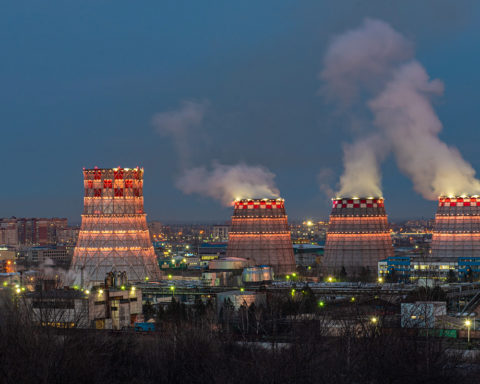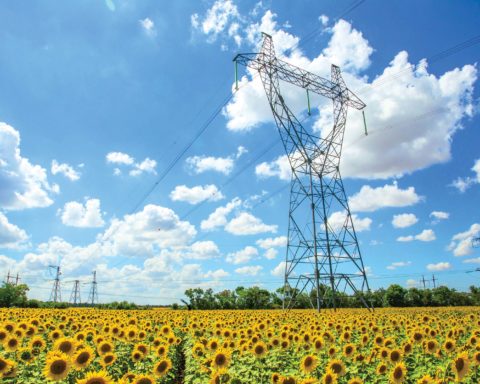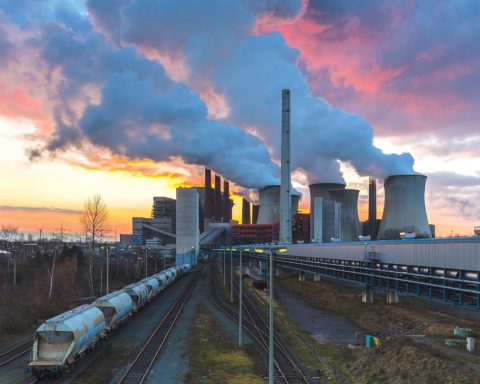Vitaly BUSHUEV
Director General with Institute for Energy Strategy,
Chief researcher JIHT RAS, professor, Doctor of Engineering
e-mail: vital@df.ru
Abstract. December 2020 marks the 100th anniversary of the adoption of the State Plan for the Electrification of Russia (GOELRO). The historical document was of broader significance than the general plan of the country’s economic development. He embodied the idea of a new civilization. In this article, the author, without repeating the classic assessments of the historical GOELRO Plan and its implementation, examines three issues: the ideology of electrification as the basis of socialist transformations in Russia at the beginning of the 20th century; methodology of energy planning in relation to the economic development of the country; the technological role of energy and information development in the formation of a new Russian civilization.
Keywords: GOELRO plan, electrification, energy development, strategy.

Source: EP
The ideology of electrification as a revolutionary change in the material base of a new society
Since the second half of the 19th century, the world has experienced an active boom in industrial production, which coincided with the development of capitalist relations. Karl Marx wrote about the relationships between social and technological development, calling capitalism “the steam era”. But both engineers and politicians understood that this main drive of industrial development of the 20th century had essentially exhausted its potential. There was a need in new sources of energy, suitable for the tasks of building a new society based on powerful industry, as well as on the advancement of civilization in everyday life. There came the time of electricity, which V. I. Lenin called the base of socialism. Outstanding politicians of the past, not being technical specialists, nevertheless understood the role and importance of electric power for the formation of new civilization. Therefore, the All-Russian Central Executive Commission was instructed to formulate a general idea: to draw up a plan of the national economy of Russia on the basis of electric power. Today, some historians dispute this idea – to link the socio-political development of society with its material, primarily energy base. Its supporters are called “vulgar Marxists”. It is argued that electrification was equally relevant both for socialism and capitalism. And, no less than for Russia, it allowed the United States and Germany to provide industrial development at a rapid pace. This is hard to argue with. Indeed, electrification has significantly changed the material basis of society throughout the world.
And by 2013, the US generated almost 25 billion kWh of electric power, and Germany – 8 billion, that is, 10 and 3 times more, respectively, than in tsarist Russia. These countries became the first industrial giants in the world. The electrical supply stimulated the emergence of the large industry – plants and factories, as well as the development of the proletariat. All this enabled the introduction of new forms of work, such as conveyor production, which significantly increased labor productivity. Therefore, in industrial and energy terms, Russia had to take the role of the “second echelon” countries. It was possible to transfer the country’s peasant economy to the industrial path of development only through radical measures. To catch up, it was necessary to adopt new approaches to the development of productive forces, namely, to ensure this growth through widespread electrification.
The pre-revolutionary plans for the electrification of Russia included two technological ideas:
– development of small stations near consumers, primarily near urban lighting, trams, replacement of flour mills, development of local manufacturing industries owned by private owners;
– creation of large district stations near sources of coal and peat with the transmission of energy over sufficiently long distances to remote consumers.
Electrification was viewed favorably by the authorities of that time only in terms of illumination of the Winter Palace, central streets of the capital, houses and palaces of the nobility. Electrification of everyday life, agriculture and peasant society was out of the question. The large-scale electrification required for the country to enter the industrial world could only be implemented through centralized electrification. But the main obstacle on this path was the rejection of technical innovations on the part of the tsarist government, the clergy and the merchant community. Suffice it to recall how categorical was the Tsar’s refusal to consider the project of the HPP in Zhiguli, adopted at the insistence of the Synod. The mayors prevented the development of expensive electric transport, and local owners refused to allocate land for the construction of power plants and power lines. And the laissez-faire principle (fr. letting smth. run its course, trusting the invisible hand of the market) was fundamentally unsuitable for the necessary radical changes in Russia at that time.
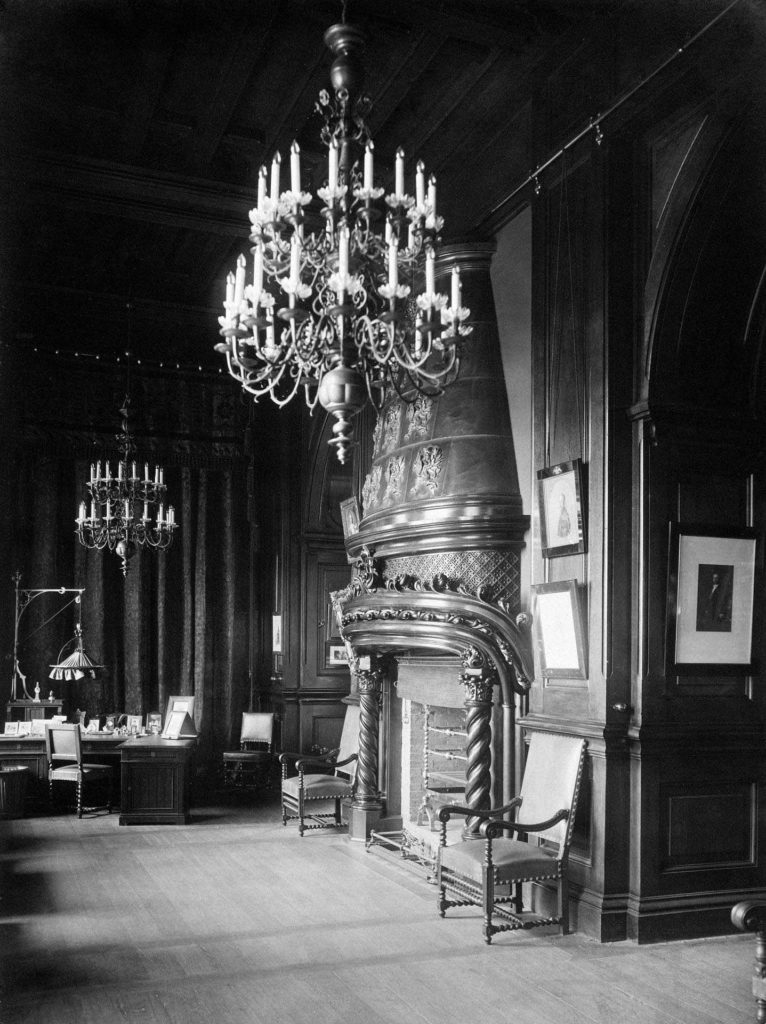
Source: topp11.livejournal.com
The Bolsheviks, and primarily V. I. Lenin, grasped the strategic relationship between electrification, which can create the basis for a radical renewal of the productive forces in the country, and the socialist system, which allows, through centralization of management, to implement electrification itself on a national scale. It was the Bolsheviks, who came to power in 1917, who not only supported the idea of electrifying Russia, but also made it the main instrument of socialist economy.
The development of Russia at that time could be achieved not by applying militarized “labor armies” to the wreckage of the pre-war industry unskilled peasant-worker masses, as it was proposed by L. Trotsky, but only by placing a powerful foundation of large electrified industry under the Soviet superstructure, and only by centralizing state support. In addition, electrification, and the Bolsheviks understood this, was a powerful means of introducing peasant life to a bright future.
Therefore, “vulgarity” consists in the opposite: the gap between social and political changes in society and the corresponding transformation of its material base, propagated by skeptics, shows the severance of the connection between “productive forces” and “production relations”, the existence of which is confirmed by the entire history of human civilization. Only the Soviet government, extremely interested in the rapid social and material transformation of society, as well as the centralized organization of production and all life in the country, made it possible to carry out the electrical revolution in Russia. At the same time, the path was chosen for the construction of large stations and the future energy association, and not for the creation of small electrical engineering and small local stations.
For Russia, it was the socialist form of organization of society and the suitable centralized electrification that made it possible to change the country faster and more effectively, turning it from a backward peasant community into an advanced industrial power.
Background to the development of the GOELRO Plan
Today, many anti-communists, forgetting about the historical transformations in the country, believe that the Bolsheviks simply stole the idea of an electrification plan from the tsarist engineers, without introducing anything new into it. Of course, everything has its own background. Thoughts, projects and plans for the electrification of Russia possessed the minds of scientists and practitioners of our country long before the revolution. By 1913, the Electric Lighting Society 1886 owned power plants with a capacity of almost 50 MW, in 1915 a peat-based station near Moscow – Elektroperedachaya (eng. power transmission) – was put into operation; such name was given to it because its purpose was to transfer power to Moscow at a distance of up to 75 km.

Source: mosenergo-museum.ru
Many talented engineers of that time worked at these and other energy facilities: R. Klasson, I. Radchenko, A. Winter, G. Krzhizhanovsky, G. Graftio, who, of course, were “tsarist engineers”, as long as there simply could not be other engineers. But many of them were also members of the RSDLP, took an active part in the Bolshevik movement. And this was not a disadvantage, but an additional advantage of the future electrifiers of Russia.

proofreader-z.livejournal.com
Starting from 1900, on the initiative of the Russian Academy of Sciences, All-Russian Electrotechnical Congresses began to be held, where not only electrical problems were discussed, but also the problems of centralized electrification throughout the country and its large regions. In particular, such proposals were made by Professors V. Grinevetskiy, K. Klingenberg, engineers P. A. Gurevich and others. In 1915, on the initiative of the Russian Academy of Sciences, the Commission for the Study of Productive Forces (CSPF) was established under the leadership of Academician V. Vernadsky. The conclusions of this commission emphasized the idea that Russia’s natural resources should not become the subject of predatory use in the interests of the industrialized countries of Europe, but a source of their processing within the country, including for the production of electric power. But only after the end of the October Revolution, the general idea of electrification became the subject of state policy of the Soviet government. The stimulus for such decision was a note prepared by G. Krzhizhanovsky with the participation of I. Radchenko and A. Winter addressed to V. Lenin in December 1917.
“Vulgarism” is precisely the attempts of the current anti-communists to present the leaders of the new Soviet regime as a bunch of politicians-adventurers who know nothing about economics or energy.
Many of the participants in these electrotechnical congresses and members of the CSPF were subsequently involved in the work of the State Commission for the Electrification of Russia (GOELRO), created in early 1920 by a decision of the Soviet government – the All-Russian Central Executive Commission. More than 200 people took part in the work of this commission – in fact, the entire elite of the engineering corps of Russia, as well as many scientists of the Russian Academy of Sciences. No matter how personally they felt about the Soviet regime, their professional experience and interests of the country allowed them to quickly get involved in common work.
G. Krzhizhanovsky, one of the initiators of the idea of electrification, who was not only a political associate of V. Lenin, the author of the famous anthem “Varshavyanka”, a participant in the preparation of the Moscow uprising in 1917, but also a professional power engineer, was entrusted to lead such a development. Working at the Electric Lighting Society of 1886, he was the author of the famous scientific work “On the Nature of Electric Current” (1909), headed the construction of the first peat-based power plant near Moscow – Elektroperedachaya (since 1912), headed the fuel department of the Moscow City Council (1917) and was the chairman of GlavElektro of the Supreme Council of National Economy (1919). Such combination of a politician and a professional in one person who enjoyed the personal trust of V. Lenin and respect among scientists and energy practitioners that allowed G. Krzhizhanovsky not only to understand and accept the idea of electrification as a single political, technical and economic problem, but also to quickly bring it to the level of a program document of an all-Russian scale.
Although the specific terms (January – December 1920) for the preparation of this document were less than one year, they embodied the achievements of many domestic and world experts in the field of energy and economics, sociology and philosophy of economics. Therefore, the commission developed not a sectoral document, but a state plan of the entire national economy, which later was renamed the GOELRO Plan. It is important that this document anticipated many future five-year plans, because it focused not only on the comprehensive development of the country, but on the main breakthrough idea of this development.
If the English science fiction writer H. Wells called V. Lenin a “Kremlin dreamer”, G. Krzhizhanovsky brought these “dreams” to the level of a state document not only of his time, but of the entire era of socialism.

Source: Boris Ignatovich / pastvu.com
Presenting this plan at the VIII Congress of Soviets, V. Lenin called it the second program of the party, in which dreams of a bright future were combined with a program of action verified in scale, timing, financial and technical capabilities. And the main historical significance of the GOELRO plan consists in the fact that this document gave the idea of electrification a verified direction of the state policy of rebuilding Russia, combining measures of a target vision of social and political prospects and directives, making centralized planning decisions with the allocation of the necessary financial, labor and technical resources It managed to change the public perception of electricity from something alien to something victorious, dear, such as the “Ilyich’s lamp”, an electric plow and an electrified conveyor plant The Unified Electricity System of the country itself was recognized by the Soviet people as the foundation of the country’s future.
GOELRO Plan and modern strategy methodology in Russia
The GOELRO Plan, consistently implemented in the USSR through the formation of general five-year programs for the country’s social and economic development, has lost its ideological significance as a political document over time.
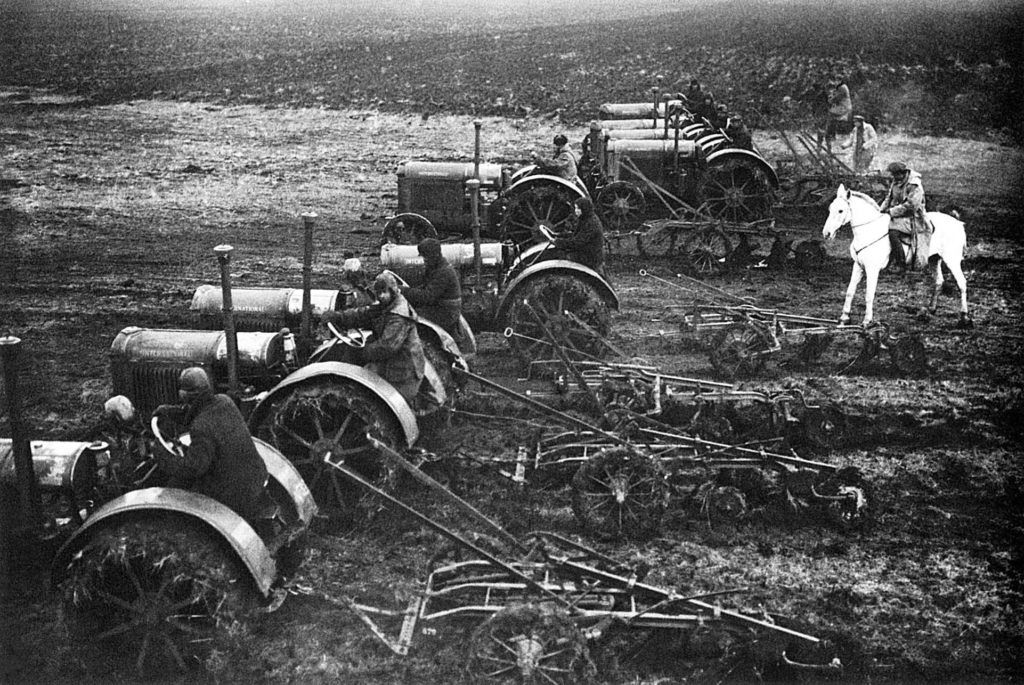
Source: Arkady Shaikhet

Source: nickrrr / Depositphotos.com
Maybe justifiably, it began to be supplemented with slogans about the chemicalization of the country, programs for the development of nuclear energy, the space complex, oil refining and gasification not only for our own, but also for export energy supply. Many provisions of the GOELRO Plan found their embodiment and development in the
5-year plans of the Soviet economy and sectoral energy programs. And it was the methodology of an integrated approach that made these plans true programs of action, which was also supported by the organizational activities of the State Planning Commission.
Unfortunately, the collapse of the USSR and the loss of centralized state administration sharply slowed down the development of the industrial base in the country. And the lack of a coherent industrial policy turned post-Soviet Russia into the consumer sector of the global industry. In many respects, new ideas and developments have been lost in all sectors, including in the energy sector, which has turned from an industry that stimulates the country’s independent development into a sphere of current livelihoods and export earnings. The liberalization of the economy and privatization essentially finished off the state system of goal-setting and the implementation of major technological innovations in all spheres. Sectoral energy research institutes (Teploproekt, VNIPIEnergoprom, Energosetproekt) were destroyed or transferred to technical divisions of private companies, and the RAS was forced to deal not with global problems of the energy future, but with private orders to ensure its survival.
At the same time, the energy sector, although it lost its locomotive role in the socio-economic basis of the country, was and remains an important factor in national security, which is especially important in the context of external sanctions on investment and innovative development of Russia. And yet, energy thought in post-Soviet Russia turned out to be alive.
The triumph of electricity is associated with three of its main features:
– the versatility of this type of energy in terms of the possibility of using various natural resources that were and are possessed by Russia: peat, firewood, coal, hydropower, oil, gas, nuclear energy and renewable energy;
– the convenience of using electricity in all areas of public production and public utilities: for power processes in industry, lighting and electric heating in everyday life, for electrification of transport, and later in medicine and the social sphere. It was the comprehensive electrification of Russia, laid down by the GOELRO Plan, that allowed the country to withstand the Great Patriotic War, when energy facilities became the ancestors of territorial production complexes on the Volga and Yenisei, Kuzbass and Sakhalin. And the creation of the EEU made it possible to ensure one hundred percent survivability of the country’s energy supply;
– controllability of electrical processes using the simplest relay circuits and the most complex information systems.
The importance of the role of energy in modern conditions predetermines the regular adoption of government decisions on the development of energy strategies of the country, their monitoring and updating. Thus, over the past 30 years, the Government of the Russian Federation has adopted 5 documents under the common title “Energy Strategy of Russia for the Period from 2010 to 2035”, in which the author had to take the most direct part. In these works, an attempt was made to formulate a target vision of the overall energy development in Russia in new market realities and conditions with new external challenges and internal opportunities of the country, to find new measures of business partnership between the state and energy companies, to formulate roadmaps for the implementation of the strategy and requirements for development programs for individual industries.
But these documents did not contain the main thing that qualitatively distinguished the GOELRO Plan – the idea of the overall goal of Russia’s strategic development. The energy sector was assigned only a passive role of the necessary and sufficient satisfaction of the country’s internal needs for energy resources and ensuring possible budget revenues from the export of energy resources. Moreover, we often heard from both officials and power engineers that there is no point in developing an energy strategy until a general program of the country’s economic development has been developed. And this provision was even enshrined in the Law on State Planning. Such consumer attitude to energy as to a system for meeting energy needs took it away from responsibility for the country’s development.
It had to be reminded that the GOELRO Plan was successfully developed and implemented even before the creation of the State Planning Committee of the country and the adoption of general decisions. And in our time, energy could become a locomotive of problematic socio-economic development in the east of the country, a pre-planned energy infrastructure would become not only a system of economic and communication integration of regions and the basis of our participation in world integration processes, and deep oil and gas processing could become a good base for industrial diversification. Unfortunately, the focus on cautious forecasts of energy demand and the absence of any ideas for the integrated development of new energy and related industries led to the adoption of energy strategies not for growth, but for survival. The basic principle under the influence of the ideology of the West was the 3D policy: decarbonization, decentralization and digitalization of existing systems. This led not only to the denial of quantitative development, but also to the qualitative renewal of the energy sector as a system of active social life based on the new energy sector.
Energy strategizing in Russia is necessary, but it must be understood that, with all the preferences for the development of the electric power industry in comparison with other industries, the main thing is the comprehensive development of the country on the principles of not quantitative growth, but qualitative innovative renewal of centralized and distributed, fuel and renewable, power and low-current energy as a system of life of a new society.
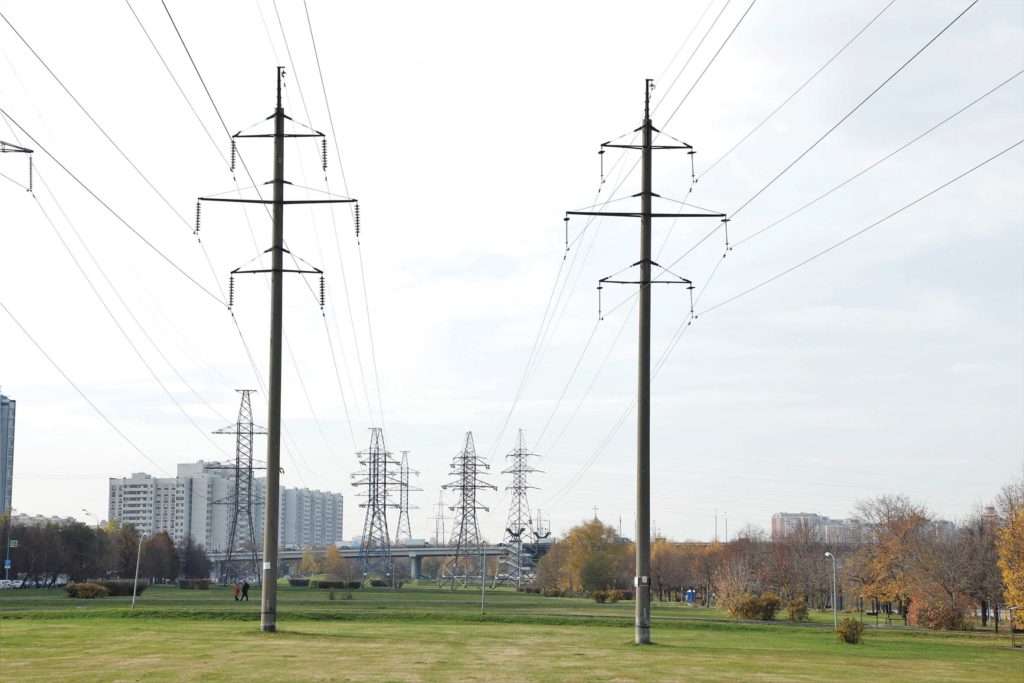
Source: EP
And energy itself in the current conditions, and even more – in the future, is already another sphere of life and development of society.
Energy information system as a system of social life
Energy is not only power processes that multiply the physical capabilities of a person and society with the help of electrified machines and new technologies. Energy is every action, labor, work, development and, finally, life itself. Therefore, energy should be considered as a system of life, because all physical and mental processes (intellectual development, information, thought, intuition and spiritual impulses) are, in fact, energy movements. Information processes carried out with the help of digitalization, which can be considered as a new form of energy, are of particular importance in our time.
Energy and information systems become the new productive force of society Their introduction into our life also requires new production relations. These are no longer giant factories and plants as it was at the time of developed market capitalism and centralized state socialism, but mixed production and communication structures, increasingly acquiring the features of the network organization of the “nature – society – person” system. In this system, the main thing is to ensure the harmony of functioning and sustainable development, including the development of nature-like waste-free industries and social spheres. Self-developing natural environment – “smart” society – intellectually and physically developed person – these are the three components of the new earthly ecumene, which interact by means of energy processes, reflected in the form of information (verbal) relations. And this harmony can be technologically ensured by the introduction of digital blockchain technologies, which make it possible to choose not quantitative integral assessments, but cloud multi-criteria functionals that characterize the quality of life in general and the prospect of a new civilization. Most likely, the world will come to an understanding of the future as an eco-socio-humanitarian system (ESHS) with its own set of relationships in this triad and its intellectual (mental) potentialities.
Without going into the details of the future world system, it should only be noted that, just as the GOELRO Plan was the integration of state socialism on the basis of electrification, so the future foresight (target vision) of the ESHS should be formed on the basis of new energy and information technologies (including social network structures).
In this sense, the experience of such intellectual forecasting in ideological and methodological terms may well incorporate the historical experience of the electrification of Russia, with the help of which our country once made a historical spurt into the future. We have to make a similar energy and informational breakthrough into a new eco-socio-humanitarian world of the future with subsequent access to a new energy-space world.

